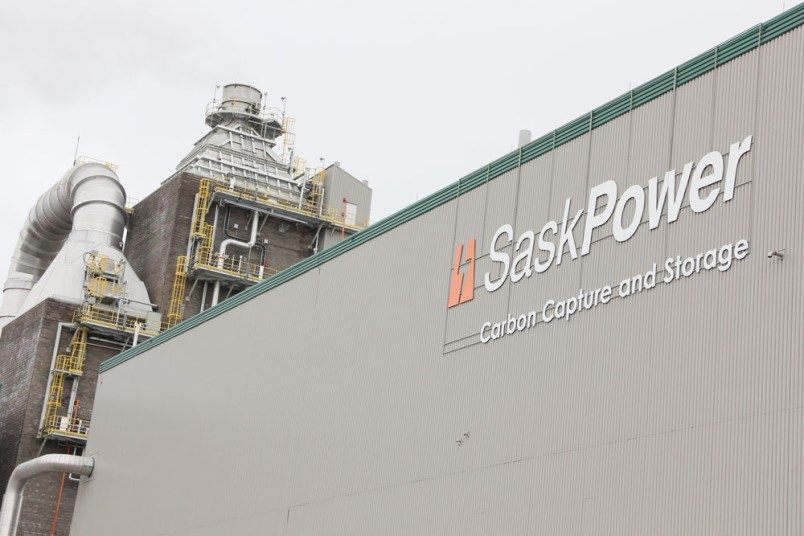SaskPower continues to work through their issues surrounding legal entanglements with SNC Lavalin associated with the Boundary Dam Unit 3, carbon capture construction contracts.
In the meantime, the carbon capture unit is still on track to meet the target of 800,000 tonnes of captured carbon dioxide by year’s end.
“I can’t comment on the legal issues surrounding the legal claims and action,” said Howart Matthews, vice-president of production for SaskPower, “but I can say that both sides are talking, we both have an interest in finding a resolution to the dispute so as long as these discussions continue, everyone believes there will be a solution.”
Matthews said he would not speculate as to how long that might take, since there were subcontractors involved in the issue and debates as well as the two principal players.
The carbon capture island has continued to perform well, he said, allowing the company to maintain their target of capturing one million tonnes of carbon dioxide by years’s end.
“There was a setback in August, but that was not on the carbon capture unit. Another unit in the plant tripped out so no flue gas could be delivered to the carbon capture unit for a few days and the process requires flue gas, so it was down for awhile and we couldn’t move our regular cleaning schedule ahead to run it at the same time as the unexpected shutdown, so we had to shut it down again, briefly, as scheduled. There was a small leak on a heat exchanger that caused the problem,” said Matthews.
“But it’s running well this month and providing a decent performance level.”
The vice-president of power production said everything points to a good carbon capture rate for September and figures would be released in early October, regarding the actual rates and volumes collected.
As far as decision-making is concerned regarding carbon capture islands for Boundary Dam Units 4 and 5, Matthews said that hasn’t been made yet and won’t be made until sometime in 2017 when the Crown company will have an even better understanding of all the construction and operating costs that would go into a second generation capture unit. He said all kinds of data is being gathered through a maze of instrumentation at the plant and with it being the first of its kind in the world, the monitoring and data gathering is well used and documented.
“Interest is up, worldwide and it is, quite frankly, overwhelming. We have all sorts of global interest and from key decision makers and that includes some from Canada. So we point out the benefits and can share some operations and technology information. Even the masters and doctorate students who visited the plant this summer, were impressed.”
SaskPower is now sharing an information centre project with BH Billiton to promote the concept of finding solutions that can be spread globally to areas where green house gas emissions are a major problem, such as China and India.
Matthews said, “I believe it’s showing Saskatchewan in a good forward thinking light.”
The SaskPower executive said he feels Saskatchewan’s Premier Brad Wall continues to be an advocate of using this technology as part of the GHG solution since the CO2 can be used for enhanced oil recovery practices, which it is currently doing. Or, it can be safely stored underground in a deep cavern that is also part of the overall program, known as the Aquistore model which is also closely monitored.
Cenovus Energy continues to pick up the CO2 as required for their oil recovery program and SaskPower is easily meeting the delivery targets. He said, of course with the current state of the oil production business, that company probably has some challenging decision-making to complete too. In the meantime, SaskPower is meeting all the demands they have.
Over at the sister station, the Shand Power Station, there is the experimental plant that is being used by Hitachi to test other methods and chemicals to capture CO2 which has also attracted huge worldwide attention. Hitachi, by being a 50 per cent partner in the project, retained first rights to the testing facility attached to the Shand power generating unit and that contract doesn’t expire until sometime next year. So, global interest in gaining access to the experimental unit, is growing all the time, said Matthews.
In the meantime, Matthews said the company continues to appreciate the general support and educated information the Estevan community continues to bring to the BD3 program and its value-added components.




